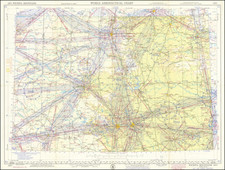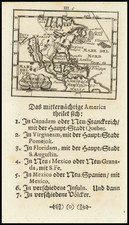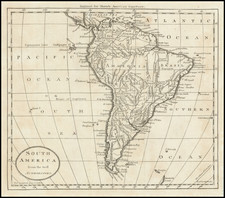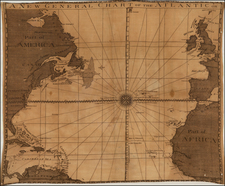Fantastic image of De Soto's discovery of the Mississippi River, based upon a painting by William H. Powelll commissioned by Congress in 1847 for the Capitol entitled "Discovery of the Mississippi by De Soto, A.D. 1541."
Powell's painting shows Hernando de Soto's discovery of the Mississippi River, below Natchez, on May 8, 1541. De Soto was the first European to report having seen the Mississippi. Powell's painting shows De Soto and his party approaching the Mississippi, with a Native American encampment in the background. De Soto, on a white horse, approaches the Indians, as one of the chiefs extends a peace pipe to de Soto.
Powell's painting was completed and hung in the Rotunda in 1855. As noted in the on-line description of the Gilder Lehrman Institute of American History:
Completed just a few years after the end of the Mexican-American War (1846-1848), in which the United States gained more than 500,000 square miles of territory, Powell's painting invoked American aspirations for discovery, expansion, and conquest. One newspaper art critic called the painting a "rendering on the canvass of the . . . submission of the Indian tribes, and the important part played by religion, allied with force, in the conquest of the New World."
This engraving, published by Johnson, Fry & Co., appeared in 1858, three years after the original painting was mounted.
In 1539, De Soto led the first major European expedition into the interior of the southeastern North America. De Soto began his expedition near Tampa Bay, Florida, hoping to find riches in North America like the gold and silver other Spanish explorers had discovered in Central and South America. De Soto and his men explored Florida, Georgia, the Carolinas, Tennessee, Alabama, Mississippi, and Arkansas. De Soto died in the Spring of 1542. His men attempted to find a land route through Texas to Mexico but were forced to turn back by dwindling supplies.
In June 1543, the surviving half of the party sailed down the Mississippi River in seven boats to the Gulf of Mexico.














![[ Game Board World Map -- Gulf of Korea named ] Walker's Geographical Pastime Exhibiting a Complete Voyage Round the World in Two Hemisphere with Tetotum, Pillars & Counters, for Playing This Highly Interesting Game.](https://storage.googleapis.com/raremaps/img/small/102691.jpg)